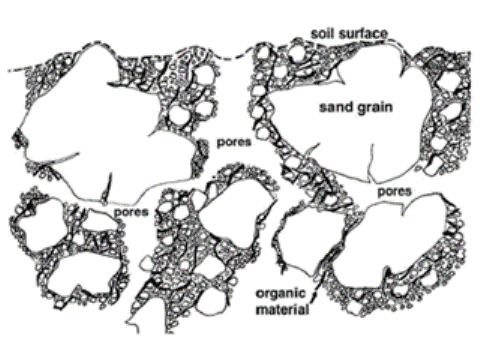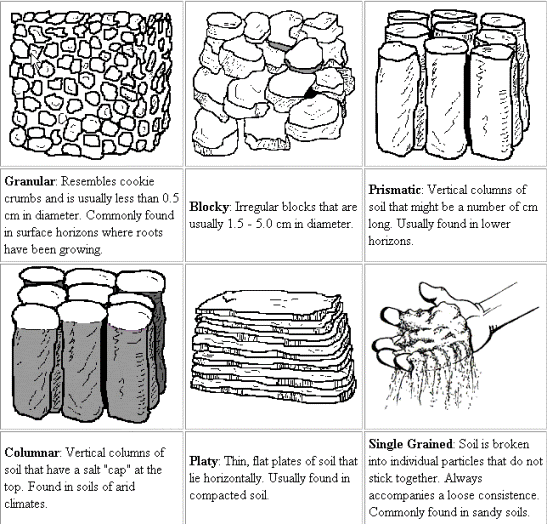
Posted on 03/02/2012 8:10:56 AM PST by JustaDumbBlonde

.
Good morning fellow gardeners! Here in NE Louisiana the weatherman claims we will reach 90 degrees today. He is really starting to get on my nerves ... doesn't he know that this is the first week of March, for pete's sake? He could shade the truth and tell us it's going to be 68, it's not like he's given bad information before, he does it at least 3 days a week. But, I digress.
First off this week, I want to share a link that fanfan, one of our gardening FRiends in Canada, sent to me earlier in the week. Three seed-sowing techniques is sure to bring valuable information to many of our gardening notebooks. Thanks, fanfan!
I'd also like to share a link to an article that shows how to build a hoop house/greenhouse that is simple, yet extremely well done and strong. In An Early Start the author provides easy to understand instructions, along with photos, for constructing a year-round environment for gardening at home. At least one of these will be built at my house this year ... I've got most of the components that I can scrap up from my piles of useful junk.
I've been threatening y'all with information on soil structure, and this week I want to begin with some basic information that we'll build on over the weeks. I hope to get everyone thinking about making the most of their yards and gardens by understanding the things we have to work with. Many of you already practice soil management and understand the importance of structure. I hope that you will join the discussion and offer all of us your some of your knowledge and expertise.
Simply put, soil structure is a term that describes the arrangement of the solid parts of the soil and of the space located between them. Basic structure depends on the soil type you are working with. (see previous thread on soil types.)

Soil structure is broken down into basic types, and is best determined by taking a sample of soil that has not been disturbed and looking closely at its shape. The shape of the soil will fall into one of the following categories: granular, crumb, blocky, platy, prismatic, columnar, single-grained, or massive. Note that massive soil is not pictured in the following diagram, but is basically unpermeable soil that is a solid block with no spaces.

Each individual unit of soil in the overall structure is called a ped. Only about 50% of structure is solid material. The remainder is spaces of air, organic matter, water and minerals. Other riches in the soil are worms, mites, nematodes, deep growing plant roots, bacteria and fungi. All of these things together are indications of soil quality, and developing a management strategy to enhance that quality is a sure way to hit pay dirt.
Why is information on structure important to you and your garden? Structure determines how well your plants will grow. Good structure reduces erosion, improves root penetration and access to soil moisture and nutrients. Even seedlings will emerge easier in well managed soil due to less surface crust. Water infiltrates good structure better and is more readily retained. Some soil health consultants claim that garden productivity can improve 2 to 3 fold with improved structure.
The best news is that anyone can improve the structure of their soil. In coming weeks I will be setting out ways to do just that. I decided to do this in several parts for a couple of reasons: structure is not something that you've going to attack and change in the span of a week; and if I presented all of it in one thread, eyes would glaze over and we would all fall asleep and miss planting season. 

The Weekly Gardening Thread is a weekly gathering of folks that love soil, seeds and plants of all kinds. From complete newbies that are looking to start that first potted plant, to gardeners with some acreage, to Master Gardener level and beyond, we would love to hear from you.
This thread is non-political, although you will find that most here are conservative folks. No matter what, you won’t be flamed and the only dumb question is the one that isn’t asked.
It is impossible to hijack the Weekly Gardening Thread ... there is no telling where it will go and that is part of the fun and interest. Jump in and join us!
It breaks down much faster. I try to turn my compost every two weeks. I'll be turning both piles today.
Does “open air” compost bring critters though? How much water do you add?
Thanks for the reply!
Good info.
Don’t the kitchen scraps bring mice and flies etc? That’s my main hesitation with just an open pile on the ground.
No critters in my open compost piles - just worms.
I bury the kitchen scraps - and chop into smaller bits to help it compost faster.
Wetter is better - downright soggy.
How far down do the leaves need to be broken? I will be planting my first vegetable garden this year. I found several garbage cans full of leaves on the side of our house.We weren’t even thinking about mulch so they just sat there over the winter. Mostly dry on top with more wet leaves at the bottom. None were really broken down except at the very bottom. (They all had drain holes except one. That one was very rotty and bad smelling, probably not usable)
Can you just till in the leaves if they aren’t broken down yet, or will that cause problems?
A drum bin of some sort will probably suit your needs much better.
Please add me to your list.
I had my front lawn dug up recently to replace a sewer pipe, and now need to plant grass there. I plan to work in some compost (old leaves from 1-2 years ago), then cover with fertilizer for new lawns, then seed.
Any comments?
Thanks
We had a bit of hail here in Central Missouri this morning. Fortunately it was small so no damage was done.
I had intentions of hauling composted horse manure in over the weekend but the rain has put the kabosh to that.
My orchard trees are about to start blooming. It’s too early and the blossoms are sure to be frozen.
Everything I've read indicates that a compost pile should be moist, but that any excess water should be able to drain away. Don't put your compost material in the lowest spot of the yard.
If rain is not providing your compost pile with enough moisture, you will need to add some water yourself. Collecting rainwater is a good practice, because rain is generally close to pH neutral and has no added flouride or other chemicals.
I do not add additional moisture to my heap unless there is an extended drought. Simple reason is that I don't have time to worry about it. I'll use it when it breaks down, but I'm not really helping the process along as much as many folks will.

Your going to have rodents but you'll learn to deal with them. The biggest shock I ever received was when I lifted the plywood cover and a Garter snake was smiling back at me...

A good working temperature for your active compost pile...
Bump & can you add me to the ping list please

But then at Lowes I found these planters designed to sit on a fence (or perhaps a ledge between two rooms). I've got plenty of sunny space on the dock, several feet from the existing hydroponics, so I ran another line and planted some tomatoes. I think this is going to work out well, especially in the winter.

The tomato on the right in the second picture is actually a decent size chunk I found on my living room floor one cold winter morning, BTW.
My order this year is going to be a combination of market crops and prepper crops. Things like apples, cucumbers, kiwi, and peppers for market, and things like witch hazel, hulless oats, and several varieties of beans for stocking up. I might not plant them all this year, in fact I don't have room yet for everything on the prepping side of the list, but I want to get the trees planted and have the seeds on hand just in case. I've already got a big box full of seeds, including several I saved from last year. There was something satisfying about watching my piles of squash and beans grow last fall.
There's a shop that buys produce from local gardeners to resell, so I won't have to worry about actually running a produce stand. Last year, they were surprisingly short on cucumbers and zucchini.
Exercise? [grin]
When we bought this place 20 years ago, the garden was as hard as concrete. My husband had a dickens of a time plowing it. The old garden fence had been removed, and wouldn’t you know it, the soil on the other side of the fence was a beautiful rich black and extremely easy to work. The previous owner had thrown scraps, trimmings, and weeds outside the garden. The only fertilizer he used was chemical because he didn’t want weeds.
My husband spent years adding clippings and dried manure from the barn, and plowing it into the soil. No more chemicals have been added, no pesticides. He spends endless time, squishing bugs by hand. Yuck! But it certainly has paid off.
I LOVE the concept of those planters. I’m going to check my local Lowe’s to see if they have them. They would be perfect on my deck!
“The bacteria and other critters that are responsible for the breakdown in a compost pile are aerobic creatures. Air flow in the pile is essential or the aerobic critters will die.”
That right there is the reason to turn the compost pile.
I have read that some people use PVC pipe drilled with many holes placed into the middle of the pile with the open ends sticking out of the sides in an attempt to get O2 into the pile.
Disclaimer: Opinions posted on Free Republic are those of the individual posters and do not necessarily represent the opinion of Free Republic or its management. All materials posted herein are protected by copyright law and the exemption for fair use of copyrighted works.